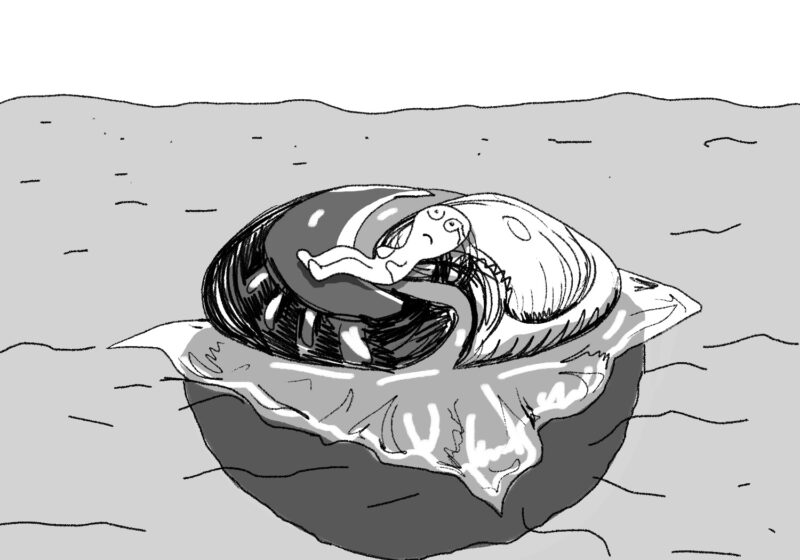Editor’s Note: This is part two of a two-part series about alcohol on campus.
Thirty years after alcohol policies changed at UR, students are dealing with a new ethanol-inspired existential crisis. Sophomore Dan Green, president of Sigma Phi Epsilon, is leading his fraternity in a transition toward a substance-free house.
The switch isn’t a campus rule, and it wasn’t a decision made by this chapter, either. Sig Ep nationals ruled that all 215 chapters across the country must be substance-free. By 2018 all alcohol has to be confined to the rooms of brothers over the age of 21, but by 2020, no Sig Ep house can have alcohol.
Green was supportive of the change.
“I don’t see this impacting us negatively at all,” he said. “If anything, I would hope it would have a positive impact. The fact is, people in this fraternity aren’t changing, and that’s our biggest draw — who we are as a brotherhood.”
Green might be optimistic, but the initial response from brothers was less enthusiastic. Some brothers felt that partying — and booze — formed a large part of their brotherhood. But despite their initial hesitations, the Sig Ep brothers came to accept the change.
Green thinks this change will be felt across the entire fraternity quad, in time. He predicts that in five to 15 years, all fraternities will be substance free. Green explains that this change will be a response to all of the hazing incidents that have given fraternities a bad reputation, pointing to the death of a student at Penn State.
“Sig Ep now is very far ahead of the curve,” he said.
Green could even see the entire campus going dry.
But Green might be overestimating how revolutionary Sig Ep’s example is to the university. Karen Zenilman, associate director of student conduct, said that the University becoming a dry campus has not been a recent suggestion.
“We have dry components to campus,” she said. “The first-year buildings are dry, again, recognizing that underage drinking is illegal […] Our policy is reflective of New York State law [and] federal law. But the way we respond to violations of that policy is consistent with harm reduction.”
Harm reduction is how the University shapes all its alcohol policies. It’s an approach that public health officials have been researching for the last 40 years.
“Harm reduction can be described as a strategy directed toward individuals or groups that aims to reduce the harms associated with certain behaviours,” reads the scholarly journal linked on the Center for Student Conflict Management’s website. “When applied to substance abuse, harm reduction accepts that a continuing level of drug use (both licit and illicit) in society is inevitable and defines objectives as reducing adverse consequences.”
A well-known example of a harm-reduction model is comprehensive sex education in high schools, said Director of Alcohol and Other Drug Education Amber Ingalls.
“It focuses on the reality that it happens, rather than avoiding it,” she said.
When it comes to responding to alcohol incidents on campus, the harm-reduction model allows Ingalls to play more of a supportive role for students, rather than that of someone in charge of doling out punishments.
“It’s recognizing that if you come alongside the person and kind of figure out what their thoughts are […] you can get people to be more aware of the decisions they’re making,” she said.
For Zenilman and Ingalls, banning all alcohol would make it more difficult for them to be more than simply punitive.
“By driving the behavior more and more underground, we [wouldn’t] have the opportunity to have conversations with students about it,” said Zenilman. “I think that we would have a hard time offering things like the alcohol education seminar that are really beneficial to students and be a dry campus at the same time.”
Ingalls agreed with her, adding, “How we talk about [alcohol] would be drastically different [if we were a dry campus], and it would make it more challenging to meet the needs of students.”
Knowing the effects of abstinence-only policies, Zenilman doesn’t think that banning alcohol on campus would even change students’ behaviors. She thought it might mean fewer registered parties on the fraternity quad. Not fewer parties — fewer registered parties. (Registered parties are one way that the University tries to limit risky drinking.) It is one of several policies that the organization must follow, including having sober students present to monitor the party.
The policies aren’t new, but Green has noticed that things seem to be getting stricter on campus.
“It’s not so much that things have changed; it’s the way that the rules are being implemented,” he said. “In the past, a fraternity would leave pizza boxes out, and whenever Public Safety would come by, they would see that everyone ate pizza. Now, they ask for the receipt and actually check to make sure there’s pizza in the box. They’re making sure people don’t cheat the system.”
That’s not the only way the University has learned to resist attempts to get around rules about alcohol. Drinking games aren’t allowed at UR, regardless of the age of the people playing, and regardless of the beverage they’re playing with. That’s right — students caught playing beer pong with water could get written up for violating University policy. Zenilman explained that it’s because students could fill their beer pong table cups with water but drink from nearby cups of beer. And there are other reasons to ban drinking games.
“So much research has shown that drinking games encourage binge drinking so significantly that it produces a safety risk,” Zenilman said. “We don’t want students practicing binge drinking. It sends out the message that it’s okay.”
The University has only one other rule for drinking on campus. There can’t be any common containers of alcohol, like kegs or bowls of punch. That also means that sizes of drink containers are limited: Students can have only 64 ounces of beer, five liters of wine, and one liter of liquor in a single container.
But students could have, say, 10 growlers of beer at the same party, which would together equal close to the amount of a small keg. Or, they could have infinite growlers of beer. (Theoretically.) The ruling is on individual container size rather than total amount of alcohol because of the dangers of common containers.
Besides hygienic concerns, drinking from common containers can make it more difficult for students to know how much alcohol they’re having. This is especially true of sweet punches that mask the taste of liquor. Despite the sometimes nitpicky policies, it’s clear that the University isn’t trying to keep students from drinking. It just wants to keep students safe.



